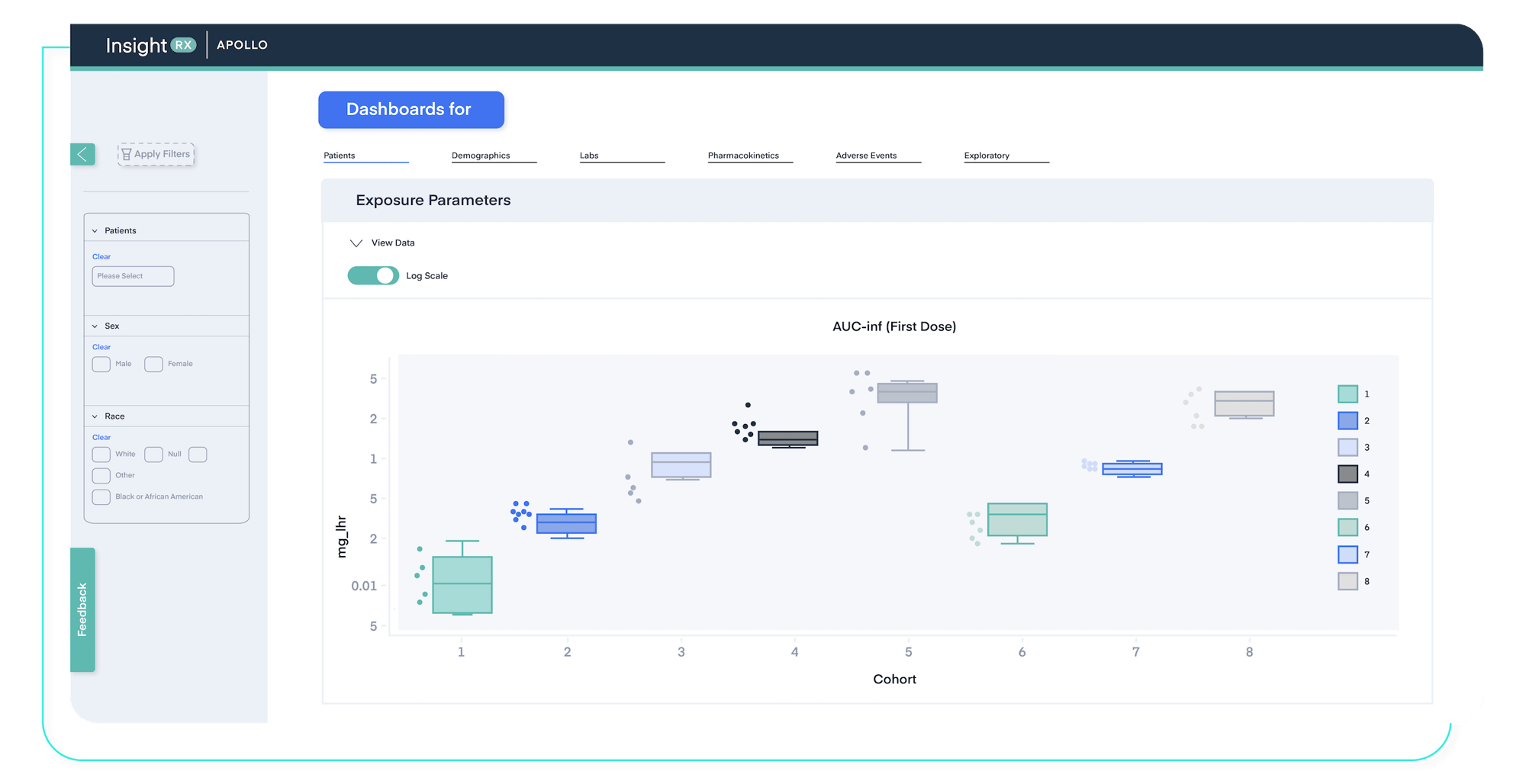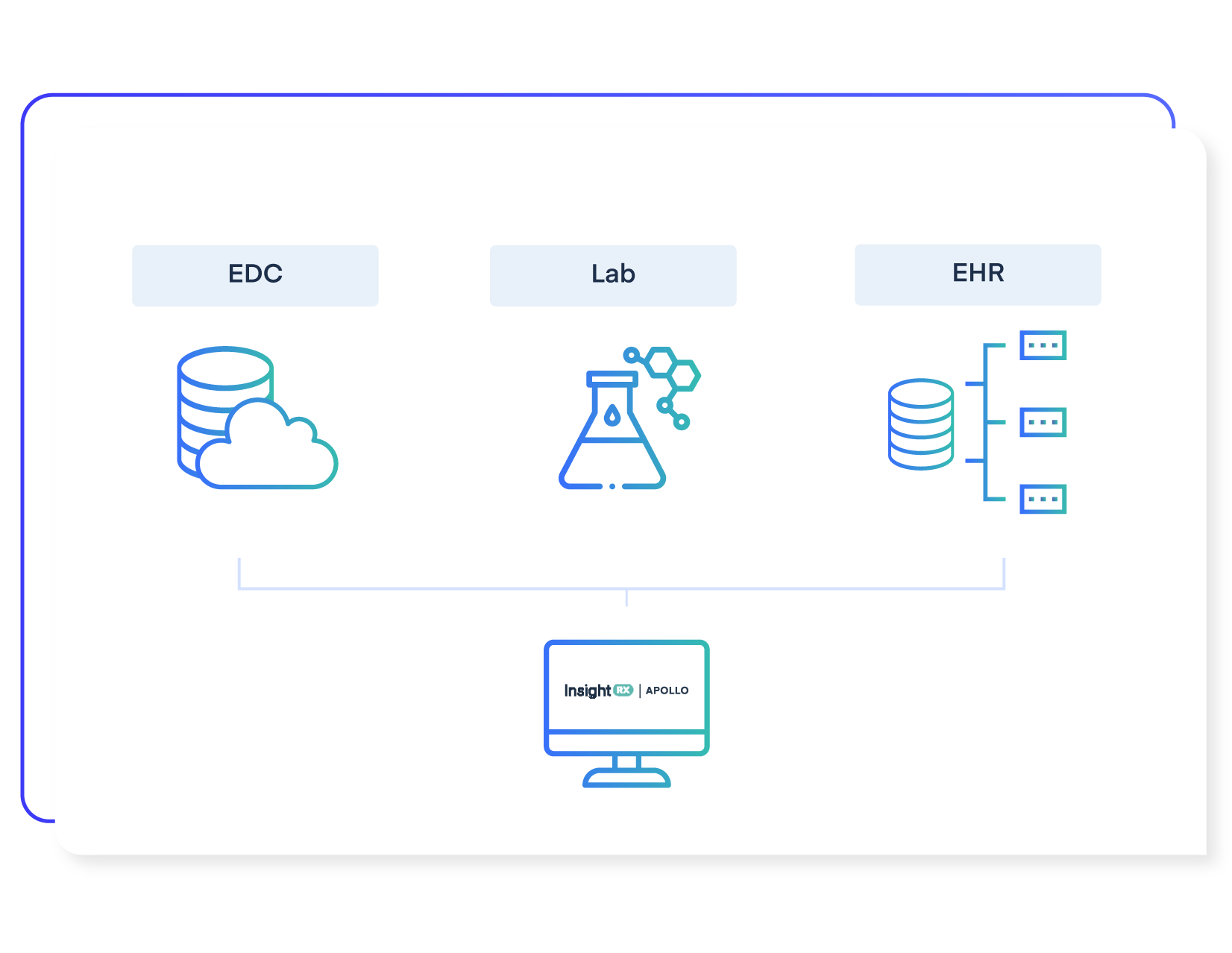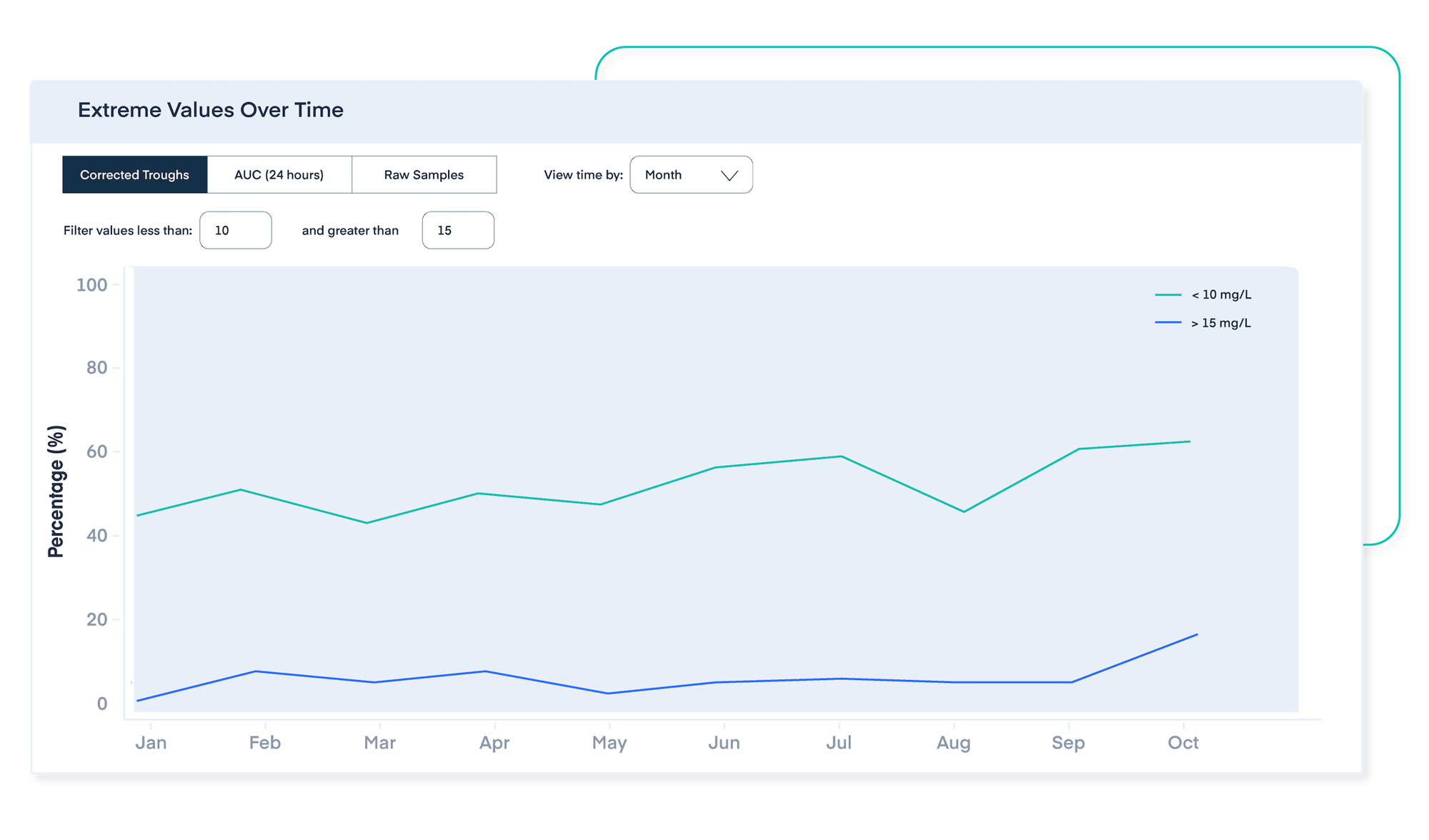InsightRX Apollo PK/PD Analytics for Clinical Trials
Drive Smarter Clinical Trials through Advanced PK/PD Visualization
InsightRX Apollo delivers advanced pharmacokinetic and pharmacodynamic analytics to empower biopharma teams with deep data insights, all supporting adaptive trial designs, patient subgroup analysis, and streamlined regulatory reporting.
InsightRX Apollo
Core features and capabilities


Comprehensive PK/PD visualization
InsightRX Apollo provides robust tools to analyze and visualize PK/PD data across diverse patient populations. This enables biopharma teams to detect trends, identify outliers, and define therapeutic windows, supporting data-driven dosing decisions.

Support for adaptive and precision dosing trials
The platform integrates seamlessly into clinical trial workflows to enable dynamic dose adjustments and adaptive study designs. This helps improve trial efficiency, patient safety, and regulatory confidence.



Streamlined regulatory submission support
Generate detailed, audit-ready reports that comply with regulatory requirements. Apollo’s reporting capabilities facilitate smoother submissions, faster approvals, and maintain full data integrity throughout the trial lifecycle.
Additional Information
Learn more about our products and services:
Drive Success in Trials with Precision Dosing
Leverage InsightRX’s model-informed precision dosing platform to individualize dosing regimens, reduce variability, and improve safety and efficacy throughout your clinical development program.
Enhance Decisions with Companion Apps
Use InsightRX companion apps to deliver real-time, user-friendly dosing guidance. These tools integrate seamlessly with trial workflows to improve protocol adherence and support precise therapy management.






